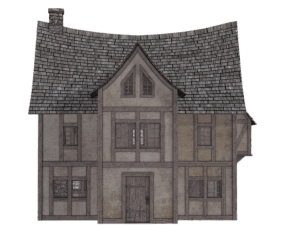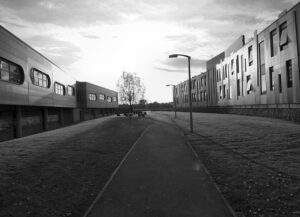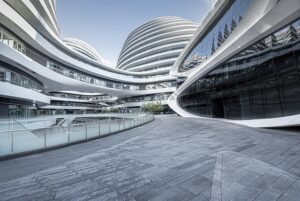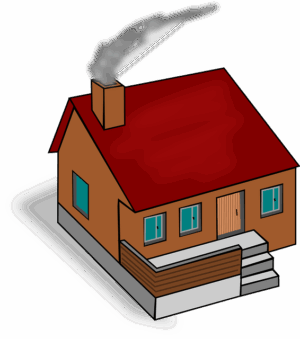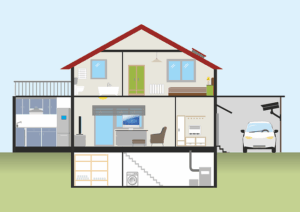Industrial unit heaters are vital for maintaining optimal conditions in controlled growing operations, offering scalable solutions like gas-fired, electric, and suspended heaters. These heaters utilize forced air heating technology to ensure even temperature and humidity distribution across large areas, enhancing energy efficiency. With BTU ratings tailored to facility size, they cater to small greenhouses to vast manufacturing spaces. Modular heater systems provide flexible solutions for dynamic environments, with heavy-duty components ensuring durability. Gas-fired and electric unit heaters offer efficient forced air heating, while suspended heaters facilitate uniform warmth distribution in large areas. Strategic planning involves assessing space needs and selecting heaters with matching BTU ratings for optimal energy efficiency and cost-effectiveness. Modular industrial unit heaters have gained popularity in agriculture, warehouse heating, and manufacturing facilities due to their adaptability and scalability.
“In the world of agriculture, maintaining optimal growing conditions is key to success. Modular industrial unit heaters have emerged as a game-changer, offering scalable and efficient heating solutions for modern farming operations. This article explores the vital role these heaters play in controlling environmental factors, with a focus on scalability.
We’ll delve into the benefits of modular systems, from their ability to adapt to changing space requirements to cost-effectiveness. Additionally, we’ll uncover the essential components and design considerations that ensure efficient heating, along with practical implementation strategies for seamless integration into your growing environment.”
- Understanding Industrial Unit Heaters: Their Role in Growing Operations
- Benefits of Modular Heater Systems for Scalability
- Key Components and Design Considerations for Efficient Heating
- Implementation Strategies: Integrating Heaters into Your Growing Environment
- Case Studies: Success Stories of Modular Heater Adoption in Agriculture
Understanding Industrial Unit Heaters: Their Role in Growing Operations

Industrial unit heaters play a pivotal role in maintaining optimal conditions for various growing operations. These specialized heating systems are designed to efficiently regulate temperature and humidity within controlled environments, ensuring ideal settings for plant growth. In warehouse heating and manufacturing facilities, where space is often limited but heat demands are high, modular industrial unit heaters offer a scalable solution.
They come in diverse types, including gas fired heaters, electric unit heaters, and suspended heaters, each with unique advantages tailored to specific needs. These heaters utilize forced air heating technology to distribute warm air evenly, enhancing energy efficiency and ensuring uniform comfort across large areas. The BTU ratings of these industrial applications are carefully considered to match the size and requirements of different facilities, whether it’s a small greenhouse or a vast manufacturing space. Heavy-duty construction ensures their longevity and reliability in demanding environments, making them indispensable for commercial heating needs.
Benefits of Modular Heater Systems for Scalability
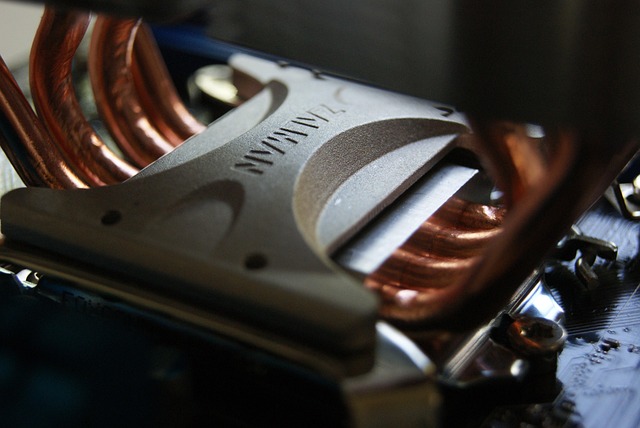
Modular heater systems offer a significant advantage in terms of scalability for growing operations, especially in dynamic environments like industrial and commercial spaces. Unlike traditional fixed heating solutions, modular heaters can be easily expanded or reduced to meet changing demands, making them ideal for adaptable warehouse heating and manufacturing facilities. This flexibility is particularly beneficial in industrial applications where space and energy requirements may fluctuate.
These systems are constructed with heavy-duty components and materials, ensuring they can withstand the rigors of continuous use in demanding environments. Gas fired heaters and electric unit heaters, both types of modular options, provide efficient forced air heating with adjustable BTU ratings to cater to various needs. Suspended heaters, for instance, offer uniform warmth distribution, enhancing comfort and safety across large areas, be it a sprawling warehouse or a well-insulated manufacturing facility.
Key Components and Design Considerations for Efficient Heating

When designing efficient industrial unit heaters for growing operations like warehousing and manufacturing facilities, several key components and design considerations come into play. First and foremost, heavy-duty construction is paramount to withstand the demanding environments often found in commercial heating applications. Gas fired heaters, for instance, offer superior performance with high BTU ratings, making them suitable for large spaces requiring intense heat, such as vast warehouses.
Alternatively, electric unit heaters provide a reliable and energy-efficient solution. Suspended heaters, equipped with forced air heating mechanisms, ensure uniform temperature distribution across the floor area, enhancing overall efficiency. Each design must be tailored to specific needs, considering factors like space constraints, desired heating speed, and sustainability goals. Proper insulation, advanced thermostats, and smart controls further contribute to optimizing energy use in industrial applications.
Implementation Strategies: Integrating Heaters into Your Growing Environment
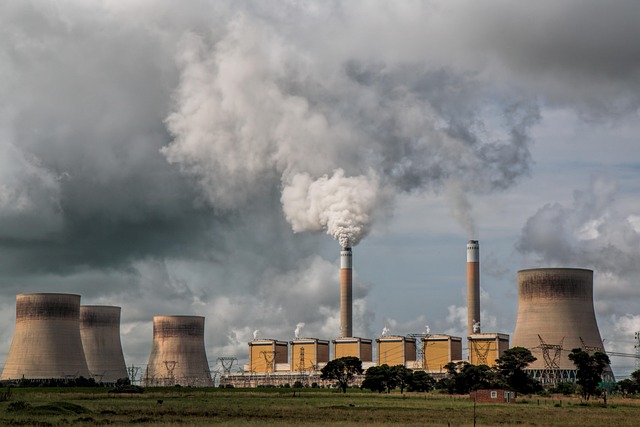
Implementing industrial unit heaters into your growing environment requires careful planning and consideration. First, assess your space and specific needs to determine the most suitable heating solution. Warehouse heating or manufacturing facilities often benefit from gas fired heaters or electric unit heaters, depending on energy efficiency goals and available infrastructure. For large-scale operations, suspended heaters can efficiently distribute heat across extensive areas, while forced air heating ensures uniform temperature control in smaller, more confined spaces.
When selecting industrial unit heaters for heavy duty construction and various industrial applications, remember to evaluate BTU ratings to match the required thermal output with your space’s size and insulation properties. This ensures optimal energy utilization and cost-effectiveness. Integrating these heaters seamlessly into your existing infrastructure demands careful design and layout considerations but offers significant advantages in maintaining ideal growing conditions year-round.
Case Studies: Success Stories of Modular Heater Adoption in Agriculture
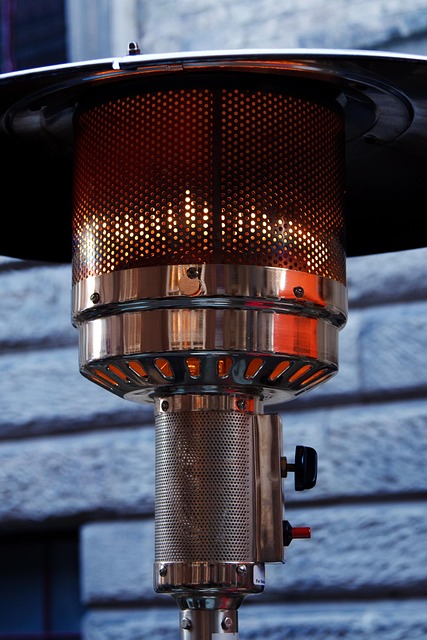
In recent years, many agricultural operations have turned to modular industrial unit heaters for their scalable and efficient heating solutions. Case studies demonstrate that these adaptable systems excel in warehouse heating and manufacturing facilities alike. Farmers and growers have successfully implemented gas-fired heaters and electric unit heaters, benefiting from forced air heating’s rapid response times and uniform temperature distribution.
For instance, a mid-sized greenhouse operation faced challenges maintaining optimal growing conditions during cold snaps. By installing suspended heaters with adjustable BTU ratings, they achieved precise temperature control, enhancing plant growth and yield. Similarly, indoor vertical farming startups have adopted modular heaters in their heavy-duty construction to maintain consistent temperatures, ensuring the successful cultivation of high-value crops in controlled environments, catering to the growing demand for commercial heating solutions in industrial applications.
Industrial unit heaters, with their modular design and scalability, offer a revolutionary approach to heating for growing operations. By understanding the key benefits and implementation strategies outlined in this article, farmers can efficiently optimize their environments, ensuring optimal plant growth and yield. Adopting these modular heater systems is a game-changer, allowing for adaptable and sustainable solutions tailored to the ever-evolving demands of agriculture.





